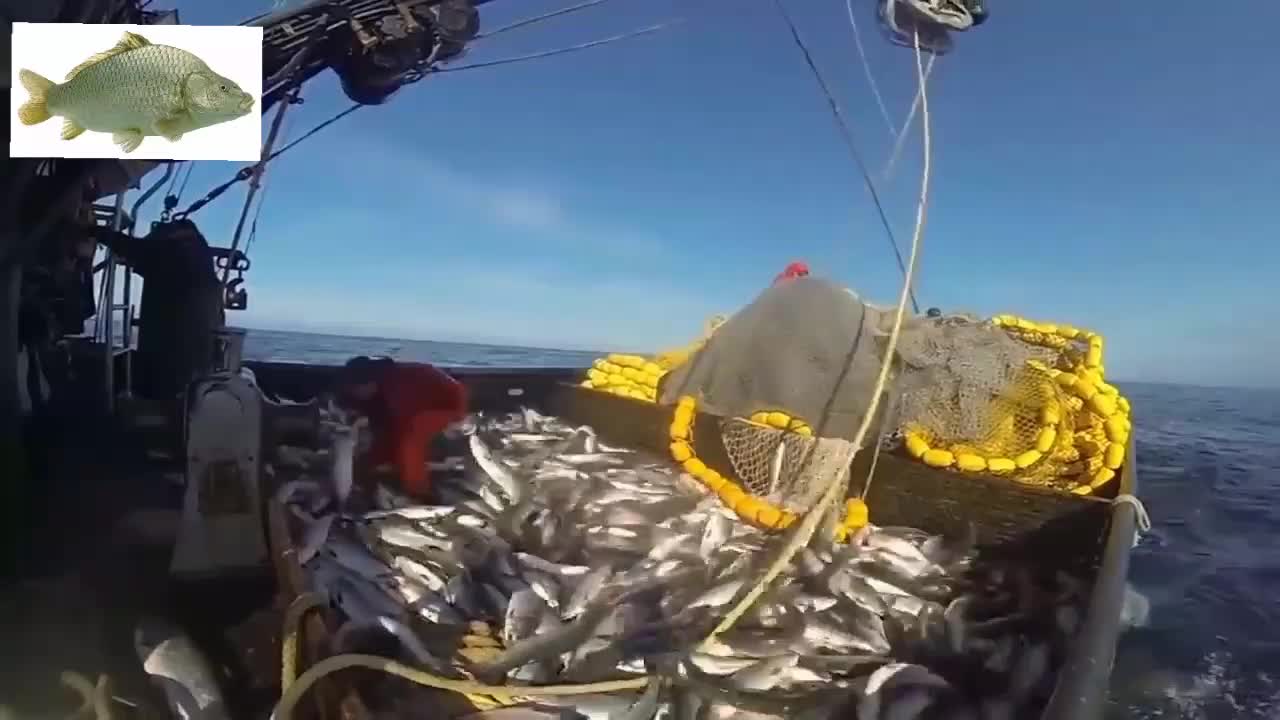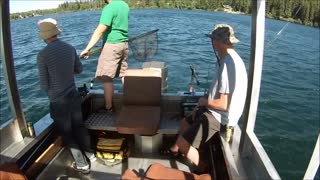Premium Only Content

SEA FISHING SYSTEM
Sea-fishing methods
Pole-and-line fishing
Line fishing at sea is very popular, not only in traditional fisheries with small boats employing a limited number of hooks but also in industrial operations with large vessels or fleets using thousands of hooks.
Pole-and-line methods are used in tropical Pacific and Atlantic waters to catch young bluefin and yellowfin tuna, and smaller tuna species—such as albacore, skipjack, bonito, and little tunny. The pole, generally bamboo, ranges in length from two to 10 metres, with a line of roughly the same length. Hooks of various sizes are barbless to facilitate baiting and removing the captured fish. To hold onto the pole a “rod rest” is generally used, which is made of canvas, leather, or old rubber tires. Depending on the size of the vessel, the crew may number 30 or more. A large crew is needed, since fishing time may be limited and the maximum possible number of rods must be worked. If larger and heavier fishes are sought, two, three, or even four poles may be linked to a single hook. In this case the fishermen must cooperate closely. Also used successfully are deck- and rail-mounted automated fishing poles operated hydraulically and electrically. The fibreglass rods are mechanically moved up and down, swinging the hooked fish onto the deck and removing the hook before swinging it, unbaited, back overboard.
The tuna is attracted and kept near the vessel by chumming, throwing live bait overboard. The bait is kept alive on board in special tanks in which seawater circulates constantly. Bait can be an expensive problem for tuna fishermen; to catch one ton of tuna, roughly 100 kilograms of live bait fish are needed. Sometimes the hooks are baited, sometimes artificial lures are used with hooks hidden in feathers. When the tuna is “hot” (very eager to take the bait), a naked hook is sufficient. Water spraying helps to attract the tuna; it also serves to camouflage the shadows of boat and crew.
Pole-and-line fishing for tuna is done in daytime from slow-moving vessels. Since considerable space is needed for the angling crew to stand side by side on the lee side of the vessel, Japanese vessels for pole-and-line fishing have a long extended bow. To simplify hauling in the catch these boats also have a low freeboard (i.e., their sides ride low above the water). American tuna vessels hang special crew racks outside the ship over the water.
-
 6:01
6:01
CkFishing
4 years agoSea Trout Fishing Sligo
33 -
 3:54
3:54
FlyJam
4 years ago $0.01 earnedKokanne Fishing
33 -
 4:29:59
4:29:59
SynthTrax & DJ Cheezus Livestreams
1 day agoFriday Night Synthwave 80s 90s Electronica and more DJ MIX Livestream CHROMIUM Edition
26K4 -
 LIVE
LIVE
GritsGG
15 hours agoBO7 Warzone Is Here! Win Streaking! New Leaderboard?
343 watching -
 3:53:07
3:53:07
VapinGamers
6 hours ago $2.13 earnedDestiny 2 - Star Wars Renegade Lightsabers Oh My! - !rumbot !music
20.4K1 -
 2:13:17
2:13:17
TheSaltyCracker
7 hours agoPipe Bomb Bull Sh*t ReeEEStream 12-05-25
101K228 -
 4:31:26
4:31:26
DannyStreams
5 hours agoBF the WZ
9.25K -
 LIVE
LIVE
Finfante
6 hours ago $0.27 earned*Interactive Stream* Something is WRONG. (Dane Jonson). | LIVE INDIE HORROR NIGHT
44 watching -
 21:51
21:51
DBoss_Firearms
12 hours ago $0.37 earnedHeaded to The Gathering with some friends!
7.3K -
 58:48
58:48
Flyover Conservatives
1 day agoUnmasking Antifa: Inside the Red–Green Revolution Aimed at the U.S. Constitution - Kyle Shideler | FOC Show
20.1K26